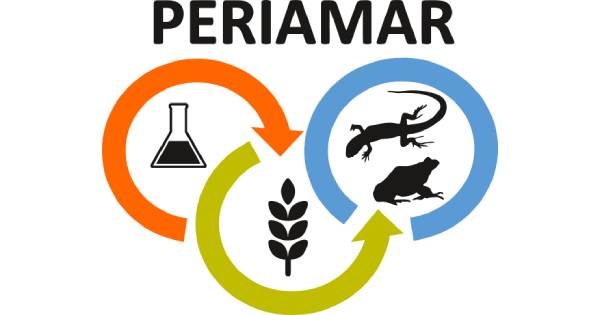- This topic is empty.
- AuthorPosts
- Febuari 12, 2025 at 11:54 mu #562200

Agriculture plays a crucial role in feeding the world, but it can also have unintended consequences on local ecosystems, particularly amphibians and reptiles.
These animals are vital to maintaining biodiversity and ecosystem balance, but their populations are increasingly threatened by agricultural activities.
The PERIAMAR initiative, which stands for “Protection of Amphibians and Reptiles in Agricultural and Rural Environments,” is designed to address these challenges.
This article explores the PERIAMAR initiative and how it aims to protect amphibians and reptiles in agricultural landscapes, promoting biodiversity and sustainability in farming.
1. The Importance of Amphibians and Reptiles in Agriculture
Amphibians and reptiles play several crucial roles in agricultural ecosystems, making their protection essential for maintaining healthy environments.
Amphibians, such as frogs and salamanders, help control insect populations by consuming vast numbers of pests, including mosquitoes, flies, and agricultural pests.
Similarly, reptiles, like lizards and snakes, prey on rodents and insects, contributing to natural pest control. This natural pest management reduces the need for chemical pesticides, which can be harmful to both the environment and human health.
Protecting these species ensures that ecosystems remain balanced and reduces the environmental impact of farming practices.
2. Threats to Amphibians and Reptiles in Agricultural Landscapes
Agricultural landscapes pose numerous threats to amphibians and reptiles, jeopardizing their populations and habitats.
Habitat destruction due to land conversion for farming is one of the most significant challenges these animals face. Wetlands, forests, and grasslands—critical habitats for amphibians and reptiles—are often drained or cleared to make way for crop cultivation and livestock grazing.
Pesticides and herbicides used in agriculture can also have toxic effects on amphibians and reptiles, disrupting their reproductive cycles, weakening immune systems, and causing direct harm. Additionally, the fragmentation of habitats due to agricultural expansion prevents these species from migrating, further isolating populations and reducing genetic diversity.
3. Goals of the PERIAMAR Initiative
The PERIAMAR initiative aims to safeguard amphibians and reptiles in agricultural environments by promoting practices that minimize harm and enhance habitat connectivity.
One of the core goals is to create sustainable farming systems that coexist with biodiversity, rather than harming it. This involves implementing strategies such as habitat restoration, the creation of wildlife corridors, and the adoption of environmentally friendly agricultural practices.
By integrating these measures, PERIAMAR seeks to mitigate the negative impact of agriculture on amphibians and reptiles, ensuring their survival and promoting biodiversity within agricultural landscapes.
4. Strategies for Protecting Amphibians and Reptiles
To achieve its objectives, the PERIAMAR initiative encourages the use of several strategies designed to protect amphibians and reptiles in agricultural areas.
Habitat restoration is one of the most effective approaches, which involves restoring wetlands, forest edges, and riparian zones that provide critical breeding and feeding areas for amphibians and reptiles.
Creating wildlife corridors and refuges allows these animals to move between fragmented habitats, promoting genetic exchange and enhancing population stability.
Furthermore, encouraging farmers to reduce pesticide and herbicide usage, or to switch to less toxic alternatives, can significantly decrease the risks to amphibians and reptiles. Agroforestry, the practice of integrating trees into agricultural systems, can also provide shelter and food sources for these animals, improving their chances of survival.
5. Collaboration and Education in the PERIAMAR Initiative
A key aspect of the PERIAMAR initiative is collaboration between farmers, conservationists, and government agencies. Engaging local communities and stakeholders is essential to ensuring the success of conservation efforts.
By raising awareness about the importance of amphibians and reptiles in agriculture, the initiative encourages farmers to adopt conservation-friendly practices that benefit both wildlife and productivity.
Education programs and training workshops are conducted to teach farmers about the ecological value of amphibians and reptiles and how to protect them while maintaining agricultural productivity.
This collaborative approach fosters a sense of responsibility and stewardship among farmers and landowners, creating a more sustainable and wildlife-friendly agricultural landscape.
The PERIAMAR initiative offers a valuable approach to balancing agricultural development with the protection of amphibians and reptiles. By focusing on sustainable farming practices, habitat restoration, and the reduction of harmful chemicals, PERIAMAR aims to ensure the survival of these vital species in agricultural environments.
The initiative highlights the importance of collaboration between farmers, conservationists, and communities in promoting biodiversity and sustainability in agriculture.
In conclusion, protecting amphibians and reptiles is essential not only for preserving ecosystems but also for supporting sustainable farming practices that contribute to a healthier, more resilient environment. The PERIAMAR initiative serves as an important step toward achieving this goal.
- AuthorPosts
- You must be logged in to reply to this topic.

